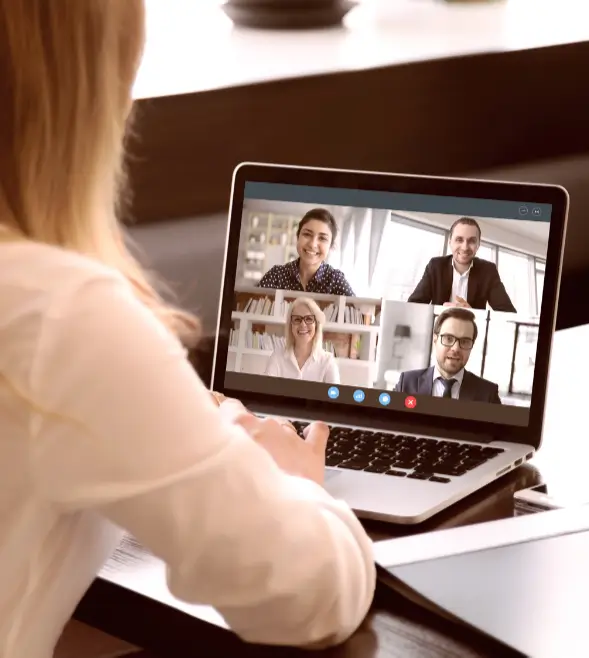-
Other audit services
We help clients with the application and use of foreign financial aid of EU and other funds and help prepare financial reports.
-
Audit calculator
The calculator will answer if the company's sales revenue, assets or number of employees exceed the limit of an inspection or audit.
-
Payroll and related services
We perform payroll accounting for companies whether they employ a few or hundreds of employees.
-
Tax accounting
Grant Thornton Baltic's experienced tax specialists support accountants and offer reasonable and practical solutions.
-
Reporting
We prepare annual reports in a timely manner. We help to prepare management reports and various mandatory reports.
-
Consolidation of financial statements
Our experienced accountants and advisors help you prepare consolidation tables and make the consolidation process more efficient.
-
Consultancy and temporary staff
Our experienced specialists advise on more complex accounting transactions, rectify poor historic accounting, and offer the temporary replacement of an accountant.
-
Outsourced CFO service
Our CFO service is suitable for companies of all sizes and in all industries. We offer services to our clients in the required amount and competences.
-
Assessment of accounting processes
We help companies to implement accounting practices that are in compliance with local and international standards.
-
Accounting services for small businesses
We offer affordable service for small businesses. We help organize processes as smartly and cost-effectively as possible.
-
Cryptocurrency accounting
We keep up with blockchain technology to serve and advise crypto companies. We are supported by a network of colleagues in 130 countries.
-
Trainings and seminars
Our accountants have experience in all matters related to accounting and reporting. We offer our clients professional training according to their needs.

-
Business advisory
We offer legal support to both start-ups and expanding companies, making sure that all legal steps are well thought out in detail.
-
Fintech advisory
Our specialists advise payment institutions, virtual currency service providers and financial institutions.
-
Corporate advisory
We advise on legal, tax and financial matters necessary for better management of the company's legal or organizational structure.
-
Transaction advisory
We provide advice in all aspects of the transaction process.
-
Legal due diligence
We thoroughly analyze the internal documents, legal relations, and business compliance of the company to be merged or acquired.
-
In-house lawyer service
The service is intended for entrepreneurs who are looking for a reliable partner to solve the company's day-to-day legal issues.
-
The contact person service
We offer a contact person service to Estonian companies with a board located abroad.
-
Training
We organize both public trainings and tailor made trainings ordered by clients on current legal and tax issues.
-
Whistleblower channel
At Grant Thornton Baltic, we believe that a well-designed and effective reporting channel is an efficient way of achieving trustworthiness.

-
Business model or strategy renewal
In order to be successful, every company, regardless of the size of the organization, must have a clear strategy, ie know where the whole team is heading.
-
Marketing and brand strategy; creation and updating of the client management system
We support you in updating your marketing and brand strategy and customer management system, so that you can adapt in this time of rapid changes.
-
Coaching and development support
A good organizational culture is like a trump card for a company. We guide you how to collect trump cards!
-
Digital services
Today, the question is not whether to digitize, but how to do it. We help you develop and implement smart digital solutions.
-
Sales organisation development
Our mission is to improve our customers' business results by choosing the right focuses and providing a clear and systematic path to a solution.
-
Business plan development
A good business plan is a guide and management tool for an entrepreneur, a source of information for financial institutions and potential investors to make financial decisions.
-
Due diligence
We perform due diligence so that investors can get a thorough overview of the company before the planned purchase transaction.
-
Mergers and acquisitions
We provide advice in all aspects of the transaction process.
-
Valuation services
We estimate the company's market value, asset value and other asset groups based on internationally accepted methodology.
-
Forensic expert services
Our experienced, nationally recognized forensic experts provide assessments in the economic and financial field.
-
Business plans and financial forecasts
The lack of planning and control of cash resources is the reason often given for the failure of many businesses. We help you prepare proper forecasts to reduce business risks.
-
Outsourced CFO service
Our CFO service is suitable for companies of all sizes and in all industries. We offer services to our clients in the required amount and competences.
-
Reorganization
Our experienced reorganizers offer ways to overcome the company's economic difficulties and restore liquidity in order to manage sustainably in the future.
-
Restructuring and reorganisation
We offer individual complete solutions for reorganizing the structure of companies.
-
Corporate taxation
We advise on all matters related to corporate taxation.
-
Value added tax and other indirect taxes
We have extensive knowledge in the field of VAT, excise duties and customs, both on the national and international level.
-
International taxation
We advise on foreign tax systems and international tax regulations, including the requirements of cross-border reporting.
-
Transfer pricing
We help plan and document all aspects of a company's transfer pricing strategy.
-
Taxation of transactions
We plan the tax consequences of a company's acquisition, transfer, refinancing, restructuring, and listing of bonds or shares.
-
Taxation of employees in cross-border operations
An employee of an Estonian company abroad and an employee of a foreign company in Estonia - we advise on tax rules.
-
Tax risk audit
We perform a risk audit that helps diagnose and limit tax risks and optimize tax obligations.
-
Representing the client in Tax Board
We prevent tax problems and ensure smooth communication with the Tax and Customs Board.
-
Taxation of private individuals
We advise individuals on personal income taxation issues and, represent the client in communication with the Tax and Customs Board.
-
Pan-Baltic tax system comparison
Our tax specialists have prepared a comparison of the tax systems of the Baltic countries regarding the taxation of companies and individuals.
-
Internal audit
We assist you in performing the internal audit function, performing internal audits and advisory work, evaluating governance, and conducting training.
-
Internal Audit in the Financial Services Sector
We provide internal audit services to financial sector companies. We can support the creation of an internal audit function already when applying for a sectoral activity license.
-
Audit of projects
We conduct audits of projects that have received European Union funds, state aid, foreign aid, or other grants.
-
Prevention of money laundering
We help to prepare a money laundering risk assessment and efficient anti-money laundering procedures, conduct internal audits and training.
-
Risk assessment and risk management
We advise you on conducting a risk assessment and setting up a risk management system.
-
Custom tasks
At the request of the client, we perform audits, inspections and analyzes with a specific purpose and scope.
-
External Quality Assessment of the Internal Audit Activity
We conduct an external evaluation of the quality of the internal audit or provide independent assurance on the self-assessment.
-
Whistleblowing and reporting misconduct
We can help build the whistleblowing system, from implementation, internal repairs and staff training to the creation of a reporting channel and case management.
-
Information security management
We provide you with an information security management service that will optimise resources, give you an overview of the security situation and ensure compliance with the legislation and standards.
-
Information security roadmap
We analyse your organisation to understand which standards or regulations apply to your activities, identify any gaps and make proposals to fix them.
-
Internal audit of information security
Our specialists help detect and correct information security deficiencies by verifying an organization's compliance with legislation and standards.
-
Third party management
Our specialists help reduce the risks associated with using services provided by third parties.
-
Information security training
We offer various training and awareness building programmes to ensure that all parties are well aware of the information security requirements, their responsibilities when choosing a service provider and their potential risks.
-
Digital Operational Resilience Act (DORA)
We will help you create a DORA implementation model that meets your company's needs and ensures that you meet the January 2025 deadline.

-
ESG advisory
We help solve issues related to the environment, social capital, employees, business model and good management practices.
-
ESG audit
Our auditors review and certify sustainability reports in line with international standards.
-
Sustainable investments
We help investors conduct analysis of companies they’re interested in, examining environmental topics, corporate social responsibility and good governance practices.
-
Sustainable tax behaviour
Our international taxation specialists define the concept of sustainable tax behaviour and offer services for sustainable tax practices.
-
ESG manager service
Your company doesn’t necessarily need an in-house ESG manager. This role can also be outsourced as a service.

-
Recruitment services – personnel search
We help fill positions in your company with competent and dedicated employees who help realize the company's strategic goals.
-
Recruitment support services
Support services help to determine whether the candidates match the company's expectations. The most used support services are candidate testing and evaluation.
-
Implementation of human resource management processes
We either assume a full control of the launch of processes related to HR management, or we are a supportive advisory partner for the HR manager.
-
Audit of HR management processes
We map the HR management processes and provide an overview of how to assess the health of the organization from the HR management perspective.
-
HR Documentation and Operating Model Advisory Services work
We support companies in setting up HR documentation and operational processes with a necessary quality.
-
Employee Surveys
We help to carry out goal-oriented and high-quality employee surveys. We analyse the results, make reports, and draw conclusions.
-
HR Management outsourcing
We offer both temporary and permanent/long-term HR manager services to companies.

-
Digital strategy
We help assess the digital maturity of your organization, create a strategy that matches your needs and capabilities, and develop key metrics.
-
Intelligent automation
We aid you in determining your business’ needs and opportunities, as well as model the business processes to provide the best user experience and efficiency.
-
Business Intelligence
Our team of experienced business analysts will help you get a grip on your data by mapping and structuring all the data available.
-
Cybersecurity
A proactive cyber strategy delivers you peace of mind, allowing you to focus on realising your company’s growth potential.
-
Innovation as a Service
On average, one in four projects fails and one in two needs changes. We help manage the innovation of your company's digital solutions!


Many companies weren’t able to let their employees work remotely because of their area of activity. In companies that were able to permit remote work, approaches varied greatly, from closing their physical office completely and sending people home, while others did not allow remote work and things continued as before. Many approached the situation flexibly, leaving it up to the employee to decide whether they worked in the office, scheduling in-office work in shifts. The decisions made by companies had different reasons. For example, they might have been made at the global level or based on the company CEO’s own habits and views.
But coming back to the current situation, companies have their share of challenges. One example is how to meet the expectations of different interest groups in regard to working, going forward. I think every team has some people who are cautious and don’t want to put themselves and their loved ones at risk of the virus. There are also those who have already recovered from the virus, have been vaccinated or have a lower perceived sense of danger. There are also plenty of those who have discovered the positive sides of distance working and want to practice it in future as well. Yet for others, remote work isn’t suitable at all, and they will work from home in case of extreme need. The company’s needs as regards organization of work in the longer term must also be taken into consideration.
Start by determining what employees prefer
At Grant Thornton Baltic, we conducted a number of surveys among employees during both waves of the virus. On one hand, the goal was to measure the current “temperature” and the positives and negatives related to remote working. On the other hand, our questions also contained a future perspective that we can use to evaluate and track changes in employees’ opinions when it comes to working in the post-virus period. In future, a majority of employees (approx. 85%) said they prefer to continue working in the office or a hybrid arrangement where they work in the office and at a distance, as needed. Only 15% see themselves preferring to work only from home.
The results should certainly be interpreted in light of the company’s previous practice and culture. Although we allowed remote work even before the pandemic, the future role of home offices will certainly be greater than it was before the pandemic. This is also reflected in recruitment of candidates. At job interviews, nearly every other candidate asks what the company’s policy is toward remote work and often a potential new hire wants to know if there is a possibility of working remotely from time to time. Work-life balance has become very important.
Let’s come back to the people who would prefer to work in an office and/or want to return to their office as soon as possible. There may be various reasons for this: the desire to keep work and private life strictly apart, lack of suitable conditions for working at home (too little space, family members are there at the same time, etc.), loss of work-life balance due to the pandemic.
Three recommendations for further action
First of all, I recommend mapping out the current situation, involving both employees and the management in the process. It is also worth asking different parties for their thoughts in connection with returning to the office. That gives an opportunity to see the risk factors related to working in the office through the eyes of the employees. It also clarifies the concerns related to remote work, and areas where employees would have wanted support from their employer. For example, a study conducted this spring revealed that over one-half of employees see the biggest risk as being too many people working in the office – they are worried about catching the illness from a co-worker. This risk is considered high or very high by 52% of employees. Employees consider it important that the office not be overcrowded and that the rules on distancing be followed.
Secondly, I recommend the company’s management to decide whether and to what degree the flexible remote work policies will remain in place while the virus is at a low level and after the virus goes away for good. Flexibility means above all the work location, but it can also be working time. Besides employees’ needs, it is no less important to evaluate the company’s needs and preferences. Does the company want employees to work more at the office or at home, to what extent are they prepared to invest into remote workplaces (desk, monitor, chair, etc.) whether people working remotely will retain a permanent workstation at the office or whether hotdesking areas will take shape. Once the answers to these questions are known, the rest of the activities can be planned. It is also important to communicate these messages to employees as clearly as possible.
The third and probably most complicated questions relate to the company’s general
organization of work, especially if hybrid work arrangements remain in use. Here it’s worth analysing the existing processes, routines and practices and think about updating them. For example, which processes it would be wise to digitalize, what will the future meeting culture be, how to ensure movement of information and so on. The employees performing remote work should not be forgotten and their work safety, measurement of work efficiency and retention of a team bond should still be kept in the focus.
In addition, look at the office’s risk analysis and, on that basis, develop
various measures to make office working safe even when there are more people in the office.
Since alternating between home and office work has been a years-long practice at Grant Thornton Baltic, we consider it important to ensure availability of information about office occupancy. In other words, the number of people working in the office would be available to employees and on that basis, they can decide whether to come in to work on a given day or not. We have found a digital solution for this – employees mark themselves as planning to work in the office via the HR software program. Co-workers can see the information in the general calendar and see how many people want to come in to work on a given day. In addition, I recommend putting together rules for use of meeting rooms, rest areas and other common spaces to ensure sufficient distancing. Soap, sanitizer and masks are still key elements in setting up a safe work environment. Rapid tests for COVID-19 have also come to the market, and are being used in several companies.
In closing, don’t forget supporting employees on mental health topics. Returning to the office after a long stint working at home can also be complicated. The results of our own study showed that the following factors predominated:
- Over 50% of employees believe that there has been a significant decline in team spirit. It takes time to get used to virtual events and they are not embraced, etc.
- Employees are tired. For many, remote work was essential in connection with school closings or fear of virus. As a result, more than half of the people work more in the evenings or weekends are constantly on a work wavelength. The intensity of the work has also increased.
Employers can support employees in several ways. For example, employees can be allowed to take part in lectures and seminars, organizing practical workshops with various exercises. They can be offered sessions with a psychologist and therapist or health insurance so that the employee can use the necessary services. It is increasingly important to add self-management and self-support tools to the toolbox so that people could find it easier to cope in a turbulent world.
Finally, if the situation finally allows, it is worth investing in get-togethers, celebrations, summer picnics. Doing things together help re-break the ice between employees returning to work. The situation over the past year has led people into a different kind of comfort zone, and leaving it can cause fear. When they are again together with co-workers, many once again feel the pleasant emotion they felt when spending time together, drinking coffee in the morning or having lunch.
A company’s biggest asset is (happy) people! Welcome back to the office, and stay safe!





